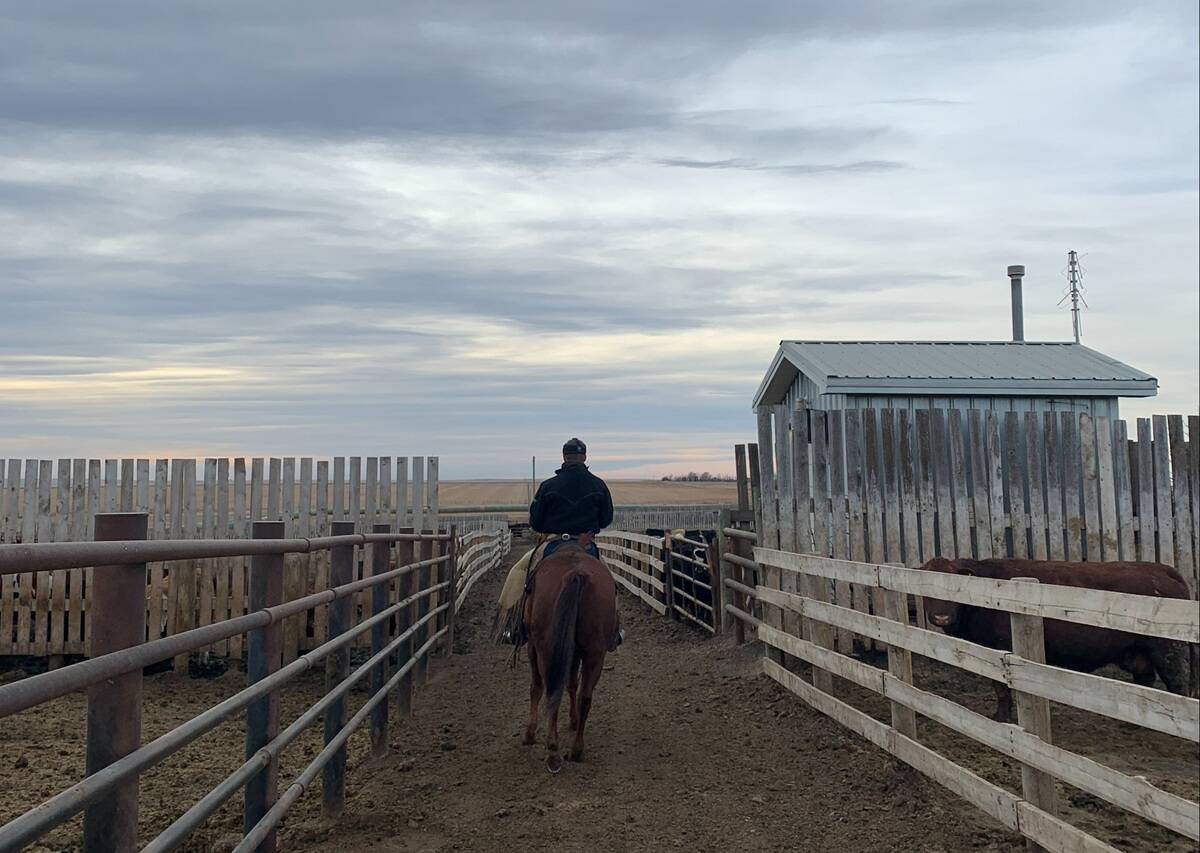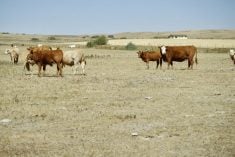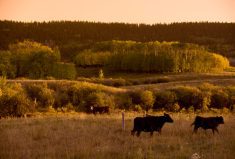For many cattle producers, Canada thistle is a perennial nuisance. As the most common weed found in Prairie pastures, the purple-flowered thistle is infamous for its ability to take over.
Many producers aim to control it with herbicides. However, there may be a way to manage it with cattle grazing.
Julia Smith with Small Scale Meat Producers has hosted webinars about training cattle to graze Canada thistle. She says it’s a difficult weed to control with traditional management systems, but grazing is “quite effective.”
Read Also

Pen riders still better than tech at detecting respiratory disease in feedlot cattle, says researcher
Recent research found that pen riders are better than tech at flagging signs of BRD in feedlot cattle
“And a bonus of that is it actually has really high nutritional value for the livestock that are grazing it.” At the rosette stage, for example, Canada thistle can have 18 to 20 per cent protein, and 83 per cent total digestible nutrients, she adds.
However, cattle won’t graze Canada thistle if left to their own devices. They’ll cruise around the pasture, “looking for their favourite thing,” she says. Instead, they must graze in high-density rotations, in “relatively small areas with lots of competition.”
“They’re going to eat whatever’s in front of them because there’s another cow right beside them that might get it.”
Smith says once the cattle hit the weed hard with grazing, and the paddock has recovered, less of the Canada thistle will come back. She says knocking the weed back gives the other plants room to compete.
“If you keep coming back and hitting that thistle, you’re going to find every time you bring those cattle back, there’s going to be less and less and less of it.”
Grazing thistles isn’t just good for the cattle, however. It’s also good for the soil. It changes the soil structure and chemistry, building more carbon and calcium in the soil, she says. Canada thistle prefers anaerobic soil with low calcium and low porosity.
“All of these things will create an environment where the thistle doesn’t want to be.”
However, combating Canada thistle with grazing is only possible with rotational grazing. To manage the weed, a producer must have a high stocking density that is quickly rotated out, giving the grass and soil time to recover.

















